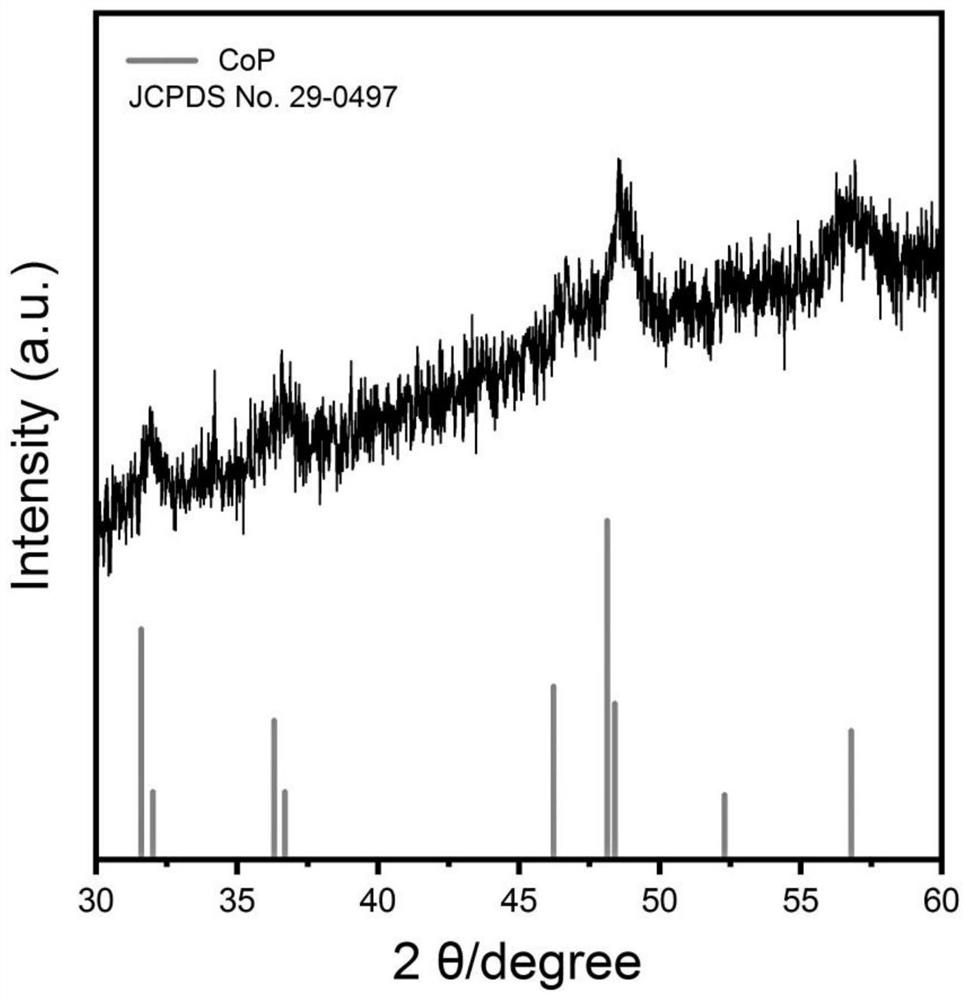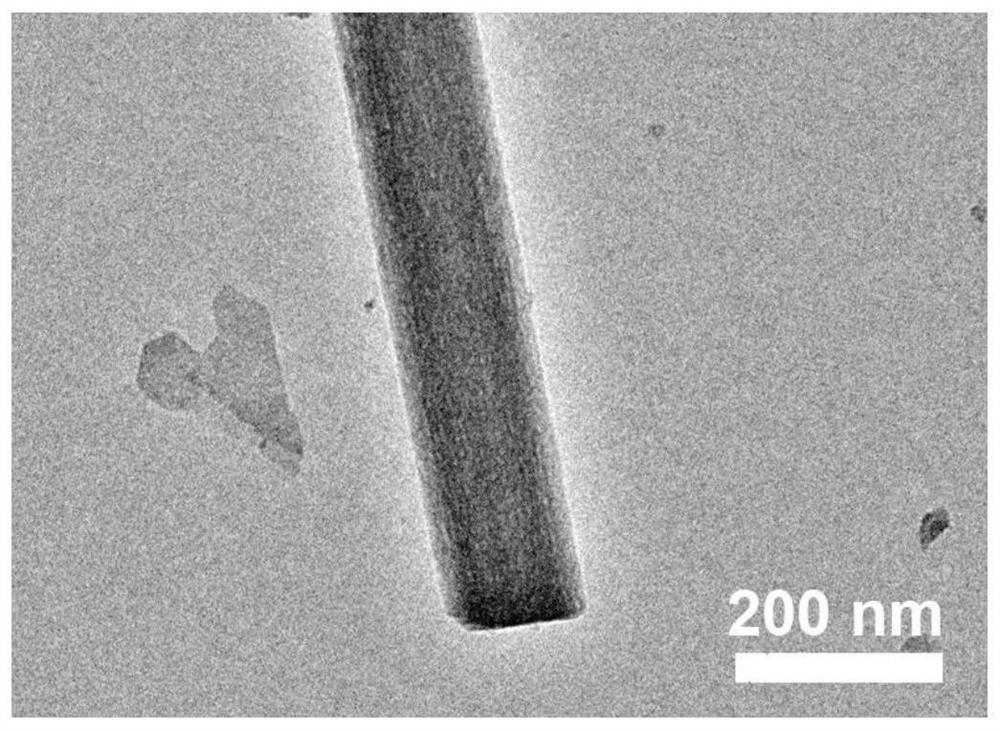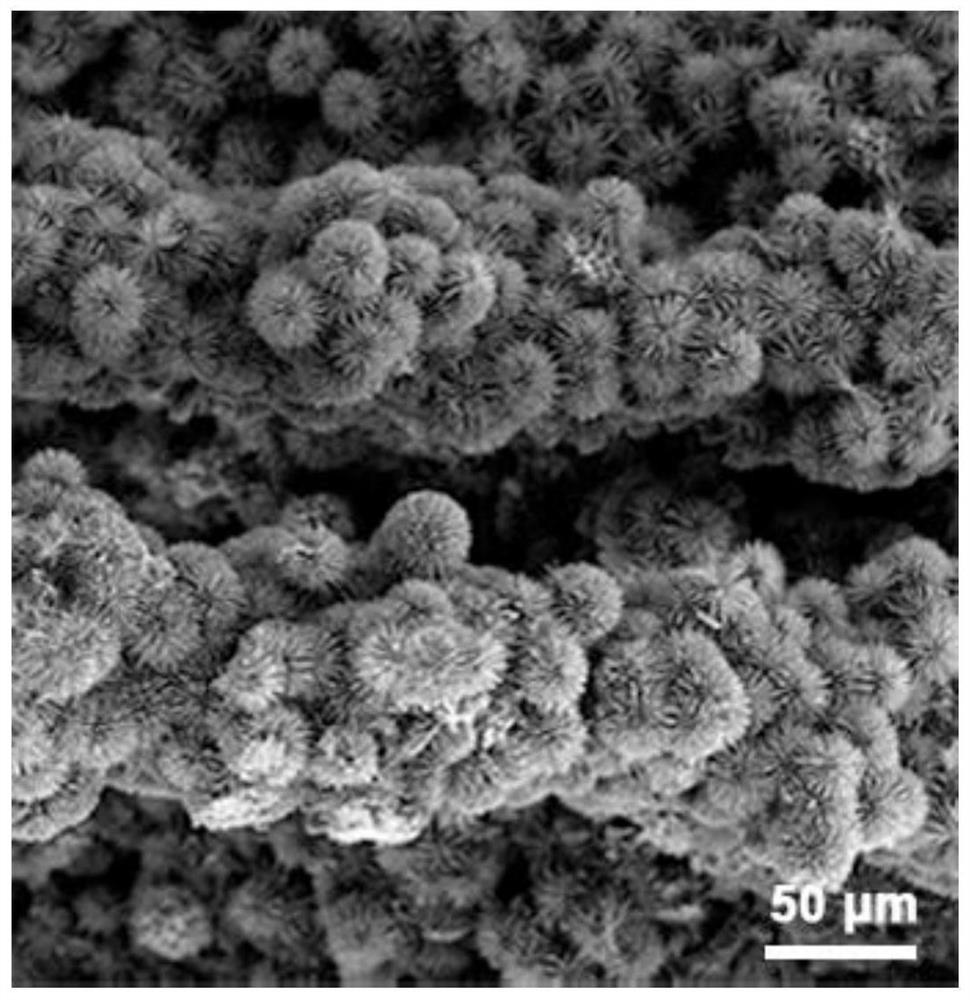Preparation method of chromium-doped cobalt phosphide nanorod array growing on carbon cloth in situ
A nanorod array and in-situ growth technology, applied in chemical instruments and methods, chemical/physical processes, physical/chemical process catalysts, etc., can solve the difficulty of increasing high-performance electrodes, cannot meet large-scale production, low efficiency, etc. problems, to achieve the effect of regular arrangement, easy control of reaction conditions, and avoidance of pollution
- Summary
- Abstract
- Description
- Claims
- Application Information
AI Technical Summary
Problems solved by technology
Method used
Image
Examples
Embodiment 1
[0066] (01) Cut the carbon cloth into a size of 1cm-3cm, soak it in a 6mol / L nitric acid solution, and heat it in an oil bath at 90°C for 6h.
[0067] (02) Stop heating and cool to room temperature, take out the carbon cloth, and sonicate in 60 mL of acetone, 80 mL of ultrapure water, and 60 mL of ethanol for 30 mins.
[0068] (03) Take out the sonicated carbon cloth and place it in an oven at 65°C for 4 hours to obtain a clean, dry carbon cloth with enhanced hydrophilicity.
[0069] (04) 0.565g of Co(NO 3 ) 2 ·6H 2 O, 0.024g of Cr(NO 3 ) 3 9H 2 O, 0.6g of CO(NH 2 ) 2 , 0.186g of NH 4 F was dissolved in 20mL ultrapure water and stirred at room temperature for 1.5h to obtain a pale pink transparent solution.
[0070] (05) Transfer the light pink transparent solution obtained in step (04) to the polytetrafluoroethylene reactor lining, put a piece of clean, dry, and hydrophilic carbon cloth obtained in step (03) vertically, cover The lid is put into the steel pressure j...
Embodiment 2
[0081] (01) Cut the carbon cloth into a size of 1cm-3cm, soak it in 8mol / L nitric acid solution, and heat it in an oil bath at 85°C for 6h.
[0082] (02) Stop heating and cool to room temperature, take out the carbon cloth, and sonicate in 60 mL of acetone, 80 mL of ultrapure water, and 60 mL of ethanol for 30 mins.
[0083] (03) Take out the sonicated carbon cloth and place it in an oven at 65°C for 4 hours to obtain a clean, dry carbon cloth with enhanced hydrophilicity.
[0084] (04) 0.553g of Co(NO 3 ) 2 ·6H 2 O, 0.040g of Cr(NO 3 ) 3 9H 2 O, 0.6g of CO(NH 2 ) 2 , 0.186g of NH 4 F was dissolved in 20mL ultrapure water and stirred at room temperature for 1.5h to obtain a pink transparent solution.
[0085] (05) Transfer the pink transparent solution obtained in step (04) to the inner lining of the polytetrafluoroethylene reactor, put a piece of clean, dry, and hydrophilic carbon cloth obtained in step (03) vertically, and cover it The lid is placed into the steel ...
Embodiment 3
[0096] (01) Cut the carbon cloth into a size of 1cm-3cm, soak it in a 6mol / L nitric acid solution, and heat it in an oil bath at 90°C for 8h.
[0097] (02) Stop heating and cool to room temperature, take out the carbon cloth, and sonicate in 70 mL of acetone, 100 mL of ultrapure water, and 70 mL of ethanol for 50 mins.
[0098] (03) Take out the sonicated carbon cloth and place it in an oven at 65°C for 4 hours to obtain a clean, dry carbon cloth with enhanced hydrophilicity.
[0099] (04) 0.541g of Co(NO 3 ) 2 ·6H 2 O, 0.056g of Cr(NO 3 ) 3 9H 2 O, 0.6g of CO(NH 2 ) 2 , 0.186g of NH 4 F was dissolved in 20 mL of ultrapure water and stirred at room temperature for 2 h to obtain a dark pink transparent solution.
[0100] (05) Transfer the dark pink transparent solution obtained in step (04) to the polytetrafluoroethylene reactor liner, put a piece of clean, dry, hydrophilic carbon cloth obtained in step (03) vertically, cover The lid is put into the steel pressure jac...
PUM
| Property | Measurement | Unit |
|---|---|---|
| Diameter | aaaaa | aaaaa |
| Diameter | aaaaa | aaaaa |
| Diameter | aaaaa | aaaaa |
Abstract
Description
Claims
Application Information
 Login to View More
Login to View More - R&D
- Intellectual Property
- Life Sciences
- Materials
- Tech Scout
- Unparalleled Data Quality
- Higher Quality Content
- 60% Fewer Hallucinations
Browse by: Latest US Patents, China's latest patents, Technical Efficacy Thesaurus, Application Domain, Technology Topic, Popular Technical Reports.
© 2025 PatSnap. All rights reserved.Legal|Privacy policy|Modern Slavery Act Transparency Statement|Sitemap|About US| Contact US: help@patsnap.com



